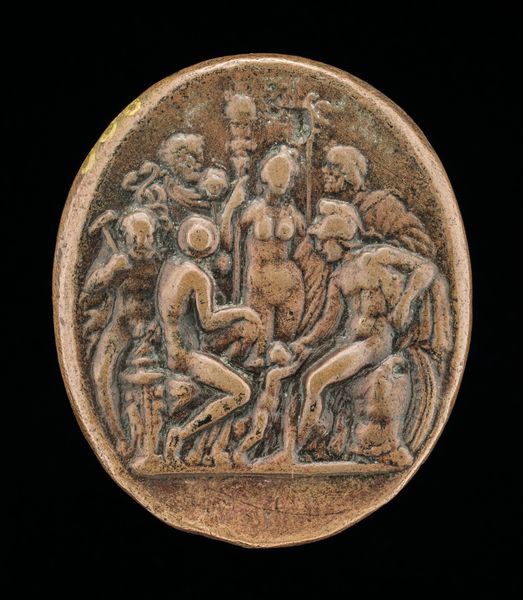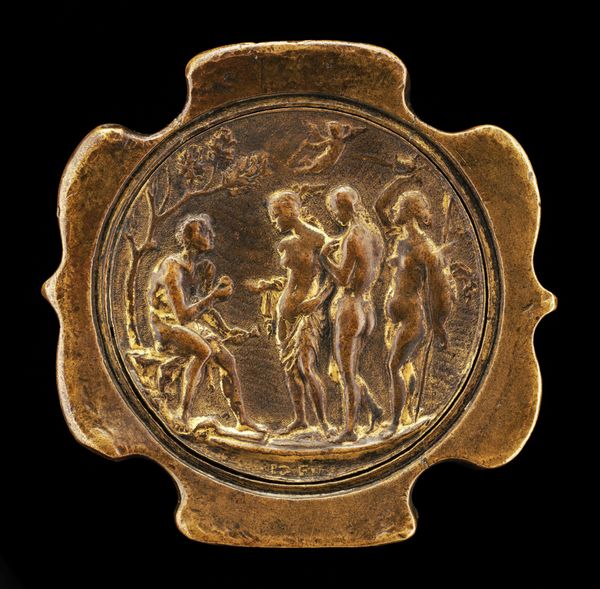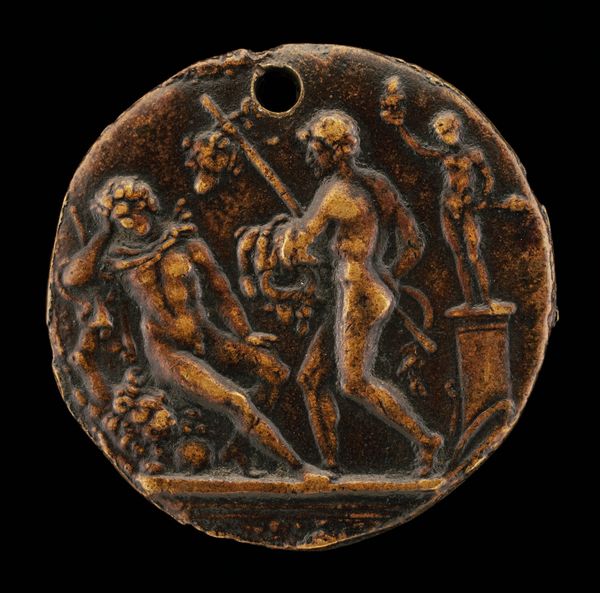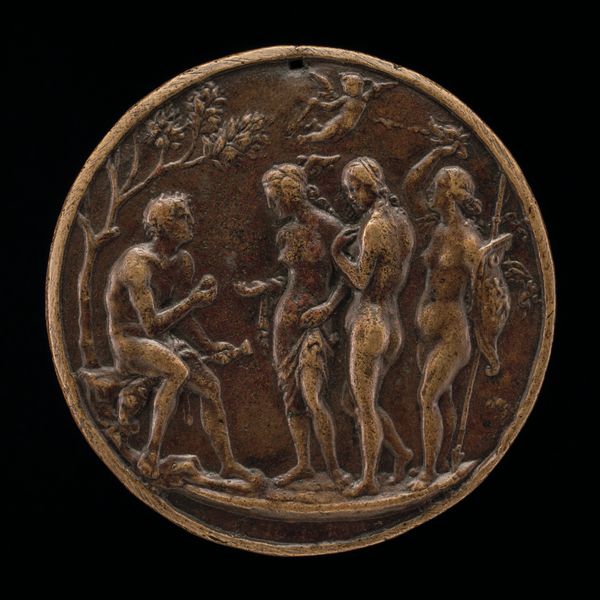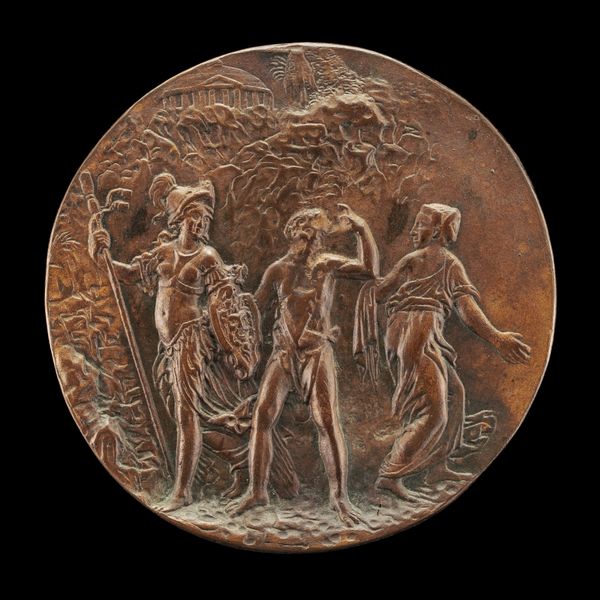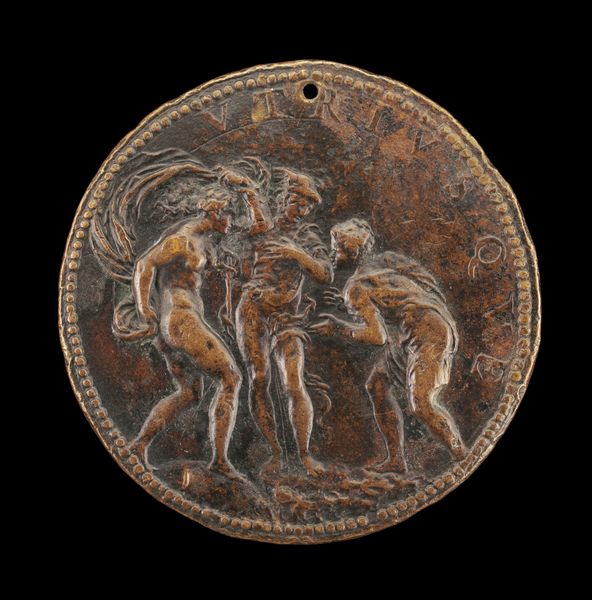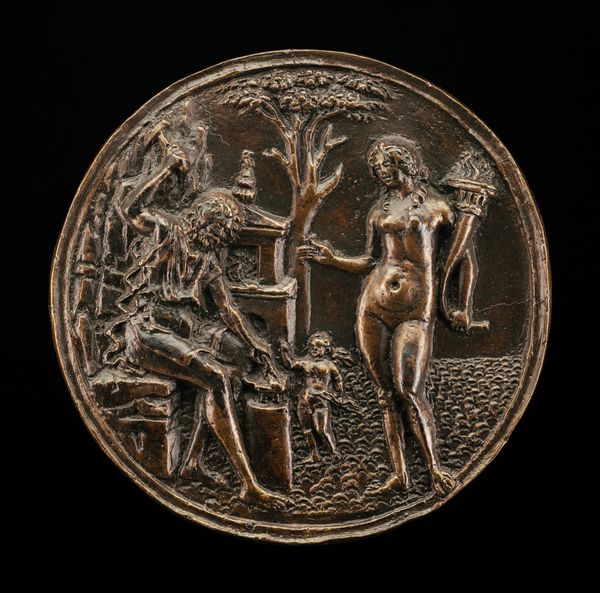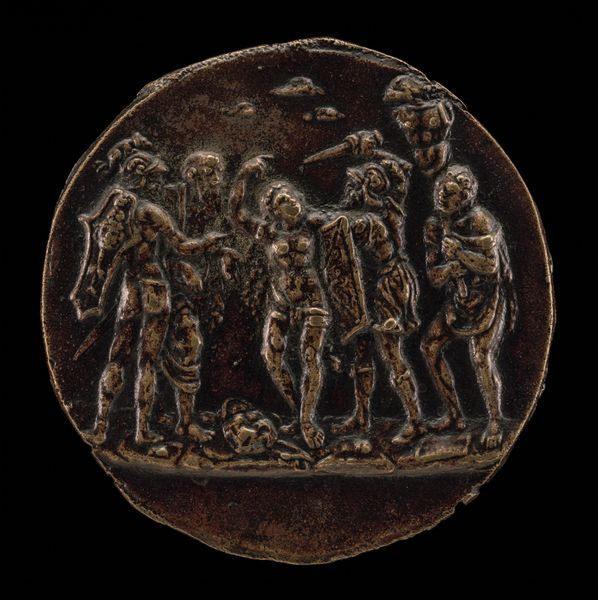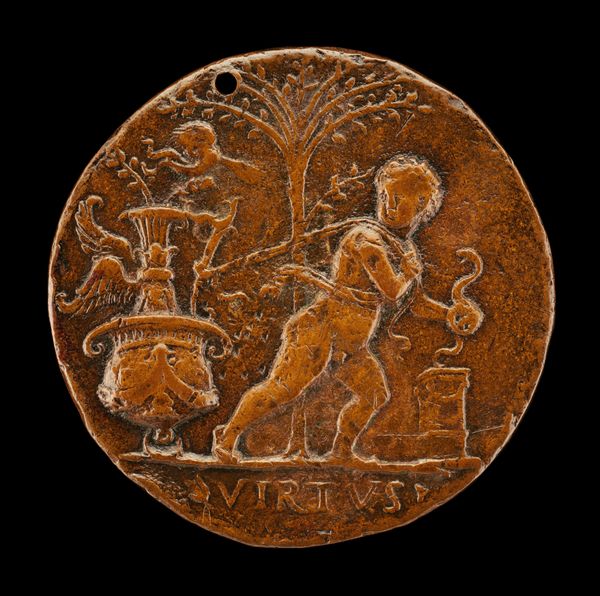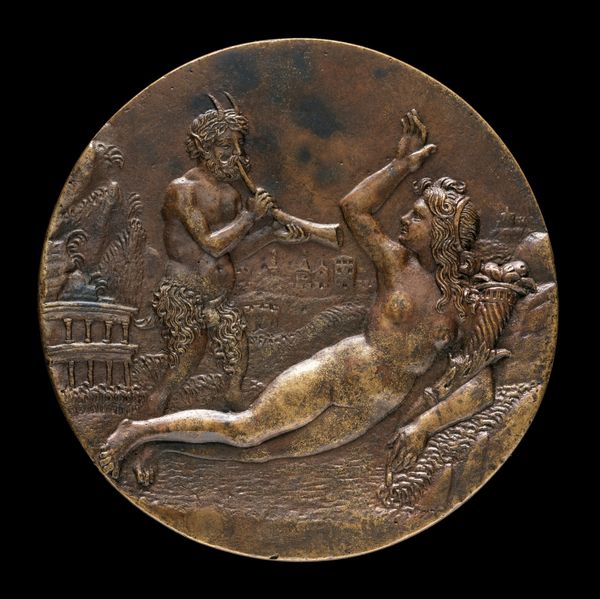![The Three Graces [reverse] by Danese Cattaneo](/_next/image?url=https%3A%2F%2Fd2w8kbdekdi1gv.cloudfront.net%2FeyJidWNrZXQiOiAiYXJ0ZXJhLWltYWdlcy1idWNrZXQiLCAia2V5IjogImFydHdvcmtzLzU4NzQ2NDkzLTgxZWYtNGRiNi1hNDA4LTg4NWI0YjU5MjljMi81ODc0NjQ5My04MWVmLTRkYjYtYTQwOC04ODViNGI1OTI5YzJfZnVsbC5qcGciLCAiZWRpdHMiOiB7InJlc2l6ZSI6IHsid2lkdGgiOiAxOTIwLCAiaGVpZ2h0IjogMTkyMCwgImZpdCI6ICJpbnNpZGUifX19&w=3840&q=75)
relief, bronze, sculpture
#
medal
#
allegory
#
sculpture
#
relief
#
bronze
#
figuration
#
sculpture
#
history-painting
#
italian-renaissance
#
nude
#
statue
Dimensions: overall (diameter): 4.1 cm (1 5/8 in.) gross weight: 40.51 gr (0.089 lb.) axis: 1:00
Copyright: National Gallery of Art: CC0 1.0
Curator: Here we have a striking bronze relief dating back to the 16th century, titled “The Three Graces [reverse]” and attributed to Danese Cattaneo. It is designed as a medal with the well-known iconic trio depicted in their traditional manner. Editor: Immediately, I am struck by the tactile quality of the bronze and the gentle curve of the relief itself. There’s something pleasing in its compact, circular format. The figures look serene, graceful, and almost detached. Curator: It is certainly fascinating to consider the cultural context. In Renaissance Italy, depictions of the Three Graces became a potent symbol of beauty, love, and charity. We need to question if the artwork challenges or upholds conventional ideals of feminine beauty. Their nudity challenges traditional representations and underscores their purity. The reverse depiction offers a subversion. Editor: I find myself focusing on the figures themselves. The details captured in the bronze are simply gorgeous, from the turn of their heads to the subtle variations in their forms. I am intrigued by the relationship between the figures, and how the eye follows a rhythm around their intertwined composition. It encourages a continuous looking, a complete engagement. Curator: To add on this the social commentary that artworks engage in when depicting female figures requires consideration. In an era of rampant misogyny, Cattaneo dares to place them as the central piece, an unusual approach that makes them impossible to look away from. Their gaze avoids confrontation; are they complicit, or is this a clever tool to elude patriarchal oversight? Editor: Looking at their composition as a whole, one could also claim that Cattaneo employed this circular composition to underscore an unending sense of movement. The subtle differences are there, in the way the light plays across their surfaces. There's real mastery in the play of shadow and light across the curved plane of the relief, animating the scene. Curator: Yes, Cattaneo invites questions about the artist's intentions and the audience's reception in a society undergoing great social change. How would people interpret this message, in comparison to now, from a twenty-first-century point of view? These questions matter. Editor: Exactly. From a purely visual perspective, it is still compelling—a lovely piece of art history that I’m thankful to have looked closer at today. Curator: Agreed, this work offers insight into Renaissance culture and continues to be meaningful to us today.
Comments
No comments
Be the first to comment and join the conversation on the ultimate creative platform.

